Here, July 2006 was hotter than this year. However in 2006 we had 41mm lovely rain, after 36mm in June ’06, whereas this year the figures to 28th July are 6mm & 4mm respectively, most unusual for the UK. My hose has been busy and no dig mulch is helping a lot.
Then yesterday afternoon we had heavy showers with 11mm rain, followed by more as I write. I hope you are having some too.
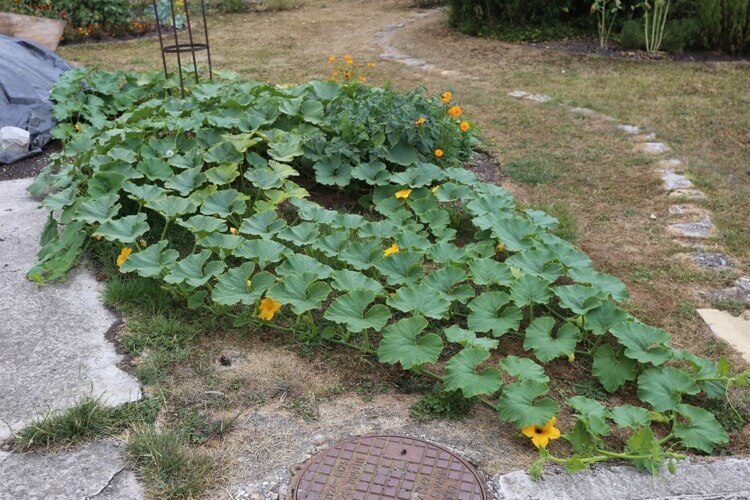
On Crown Prince squash rambling over unmown grass

Borlotti beans on left are suffereing moisture competition with the squash. We just started watering the teepees to right.

Unwatered flower border
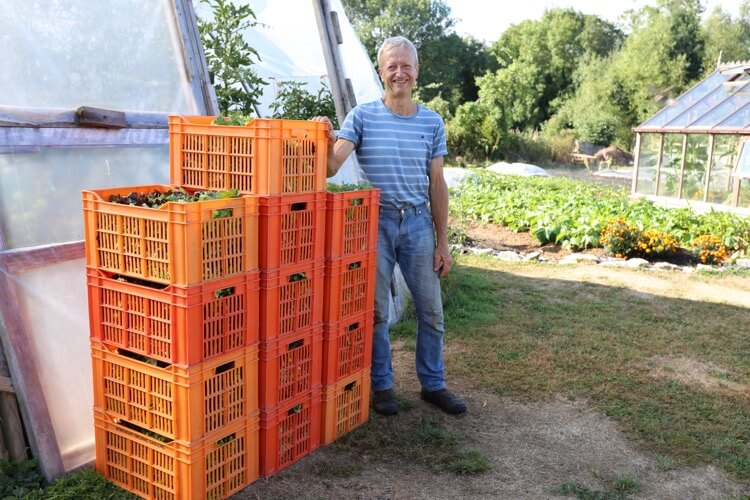
Half the watering we do is for the most valuable crop, lettuce: 31kg here, picked in 2.2 hours
No dig and moisture 1
In the trial, we give the same amount of water to dig and no dig beds. While it would be fascinating not to water them at all, and see which veg died first, I prefer to carry on cropping! Veg on the no dig bed are looking mostly stronger, and harvests so far in 2018 are 28kg dig, 42kg no dig.
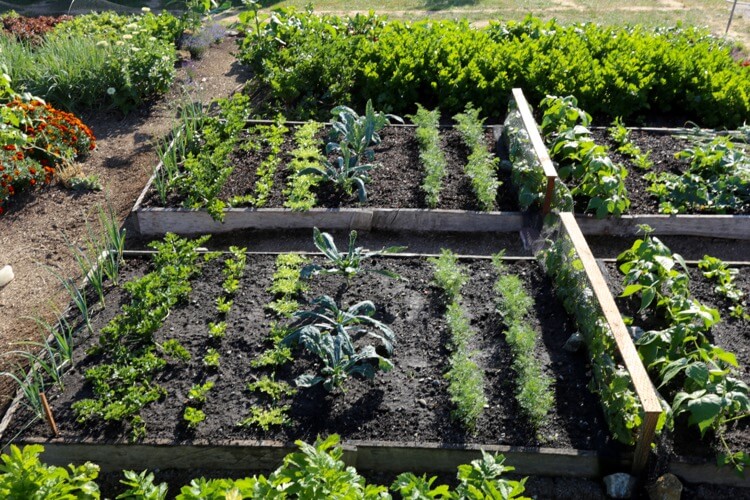
Second plantings, dig bed in front, no dig behind
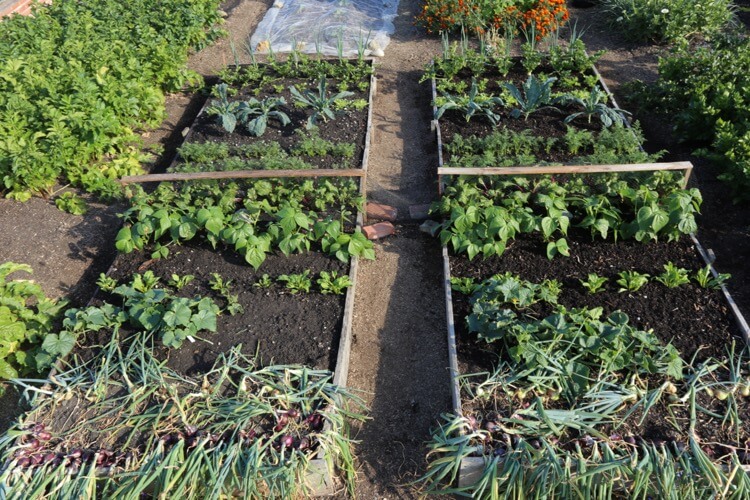
Dig left, no dig right and onions are the only first planting yet to harvest

This lettuce bed has been picked twice so far. was broccoli in April-May, net is against rabbits and birds
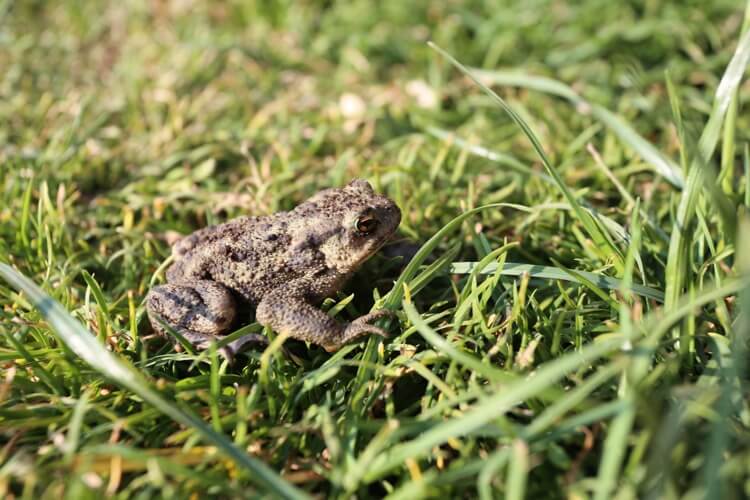
Steph spotted this toad among lettuce while we were picking
Moisture 2
We are not watering all veg, even celeriac is unwatered so far, on the basis that water is most efficiently applied close to harvest. That is, after watering new plantings so they establish. You could say, water at the beginning and at the end.
Exceptions are leaf veg such as kale and salads, which need water all the time while cropping. And veg that are fruiting such as beans, tomatoes (not too much or they lose sweetness), cucumbers and apple trees!
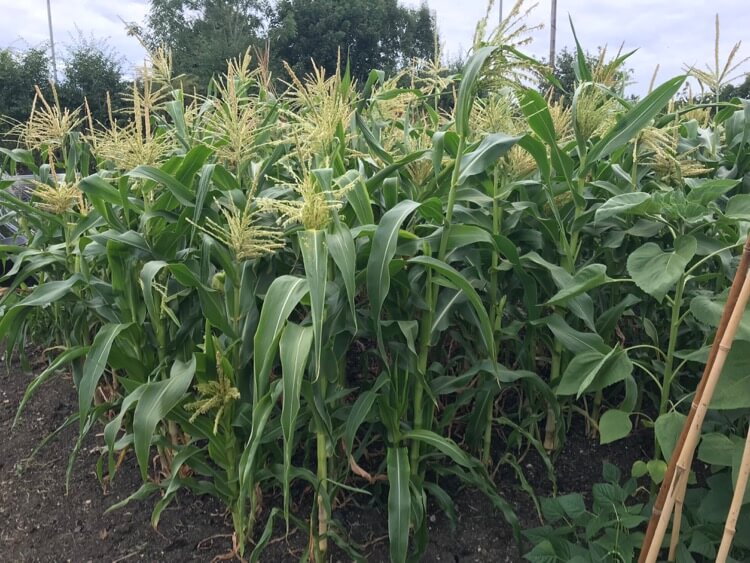
Sweetcorn on Steph’s allotment, watered at planting and twice since
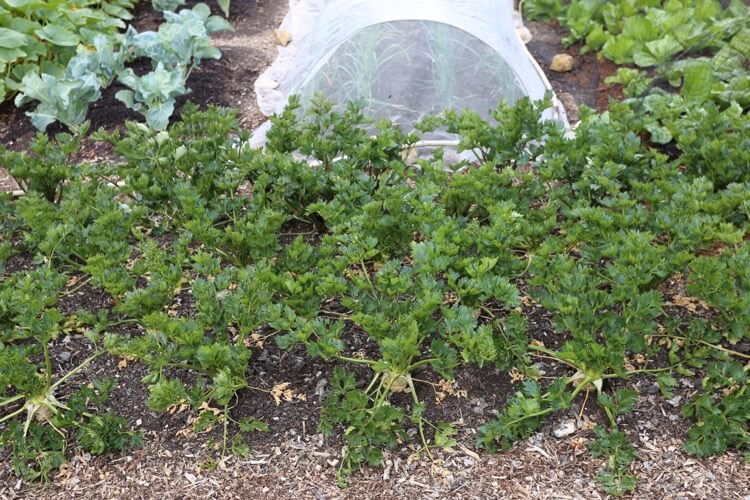
After watering at planting in late May, these celeriac have had no water

Apples on M9 rootstock will soon be cropping so I watered them recently
Intensive cropping - small garden 25m2
The small garden is cropping well with a lovely variety of summer harvests: tomatoes, French beans, lettuce, onions, peppers, beetroot, French beans and soon see kale. There is a video series explaining how I do this and here is early June.
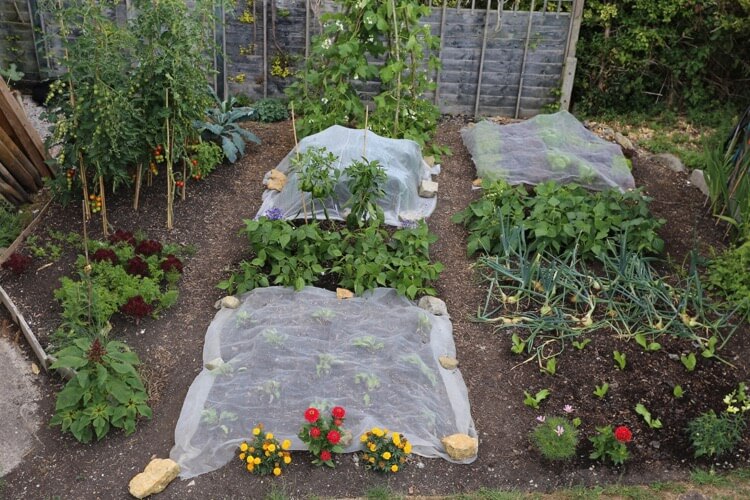
25th July, mostly second plantings

Small garden July 2018, covers removed for photo are over leeks against leek moth & beet plus lettuce leaves against sparrows
New area
This area was weedy grass last autumn, November 2017.
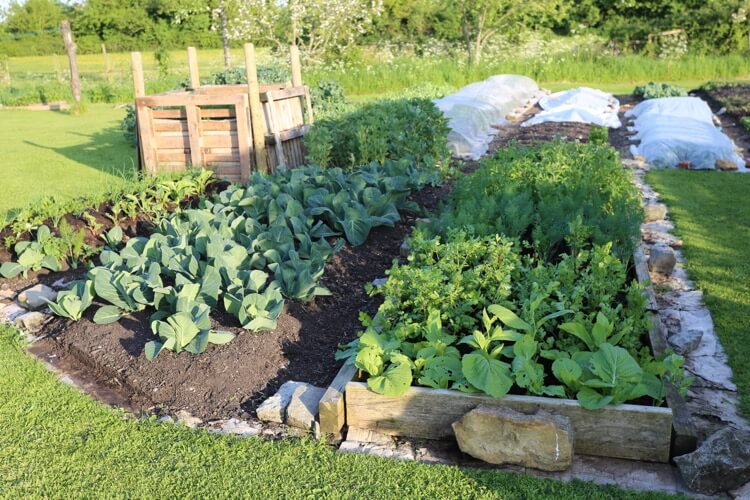
Spring in the new area, beds created over weeds 6 months earlier

Same view two months later in late July, dwarf beans left & multisown beetroot right
Steph helped to spread compost (including old manure) on cardboard we had laid over the weeds. The photos show first and second crops in 2018, with almost no weeding needed.
Sow now
August is fantastic for sowing many veg such as salad rocket, oriental leaves, turnips and spinach. Sow by mid month in order to have vigorous harvests through autumn, sow late month for smaller plants in autumn that may overwinter more strongly.
Examples:
chervil – coriander – dill – land cress – wild rocket -spinach by mid August for autumn cropping,
any salads in mid August for planting September and to grow under a cloche,
spinach – spring onion – spring cabbage late August for overwintering small.
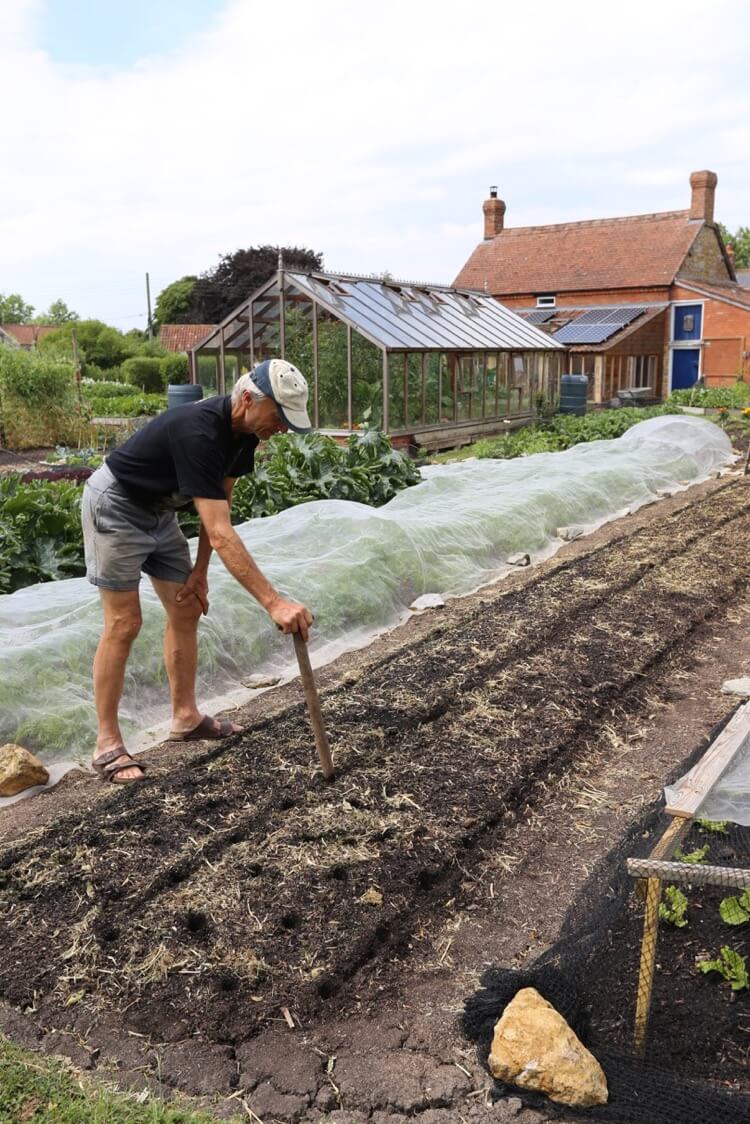
Dibbing holes for 3 week old lettuce in the bed that was peas for shoots

Gardeners World magazine August 2018
Summer abundance
July is always such a giving month. I have posted a video on my channel about harvesting potatoes.

Aubergine Jackpot F1 in the greenhouse, fed with compost mulch only
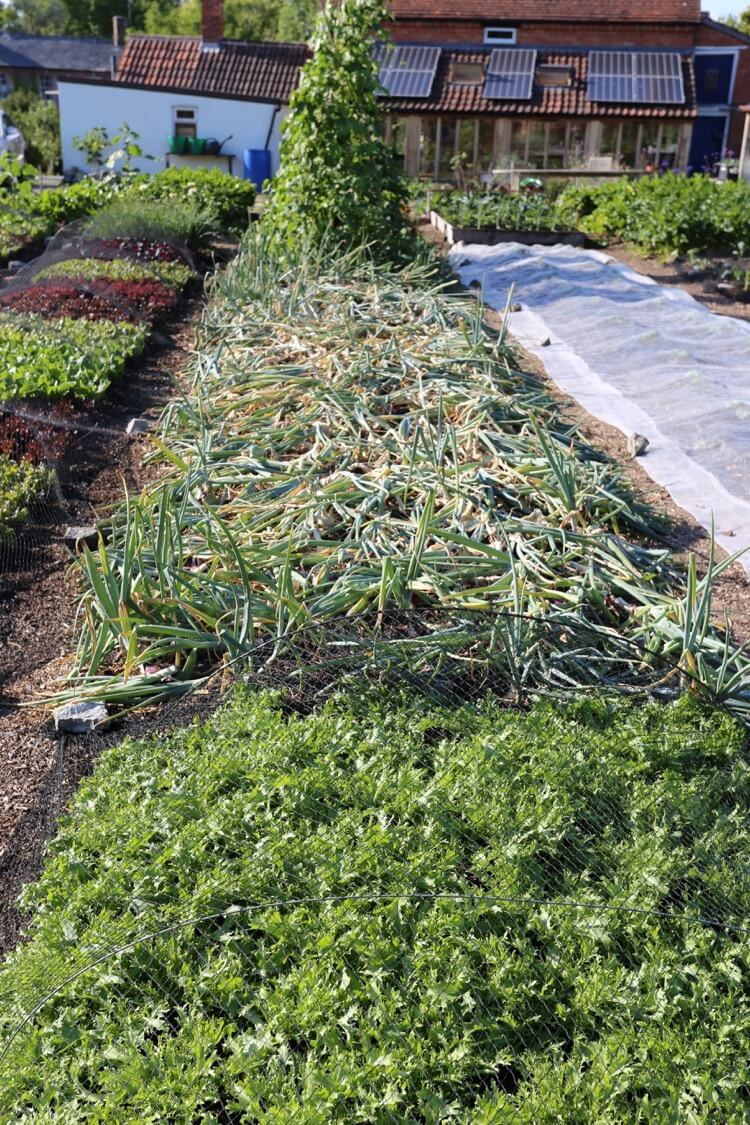
Endive Frenzy which we pick like lettuce, and onions ready to pull
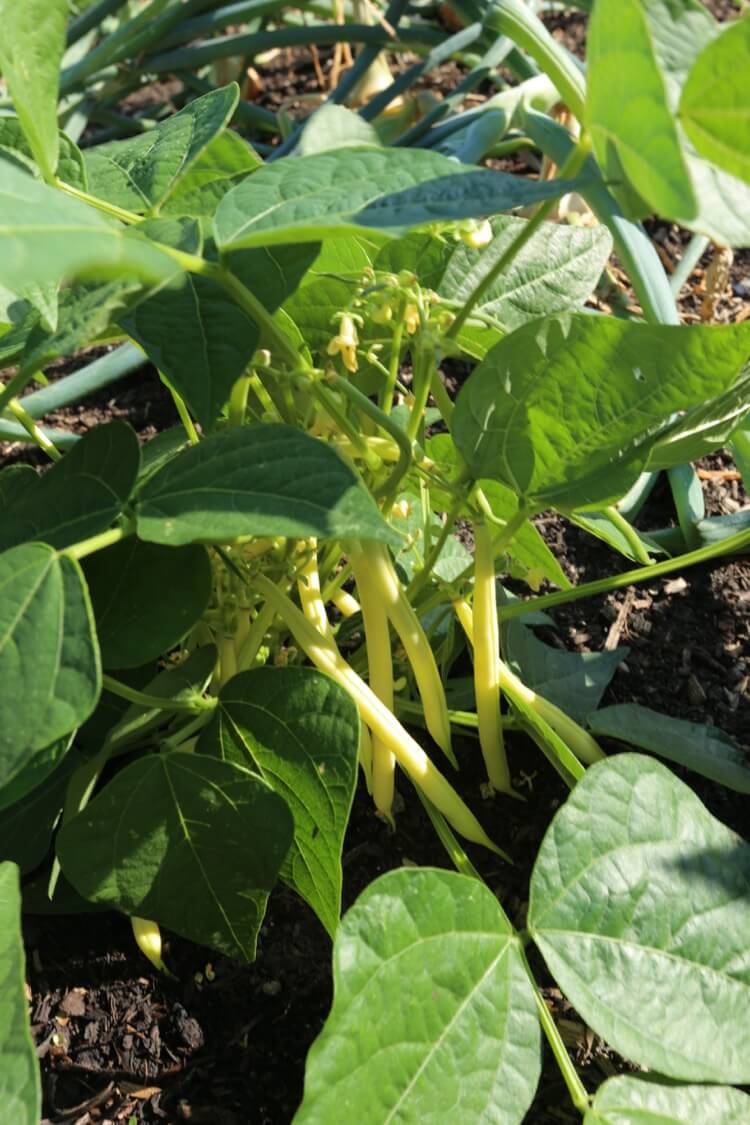
French beans Orinoco in the small garden
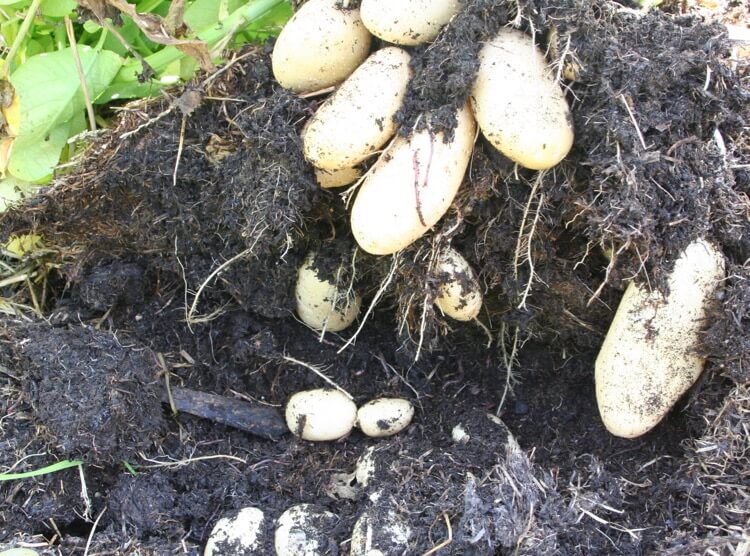
Harvest of no dig Charlotte potatoes in July 2011: the video is 2018 & they are smaller!
Mulching
Because of the unusual dryness, I have relaxed my mulch method and am trialling some less decomposed materials, which in a normal summer here would harbour slugs. In 2018, the digestate I was given (by product of methane production) is helping to conserve moisture. It is grass and maize.
However, mulches like this conserve only moisture which is already present. Once roots have sucked that out, they are not a magic way of producing more moisture. They just slow the evaporation, and perhaps help roots by keeping soil cooler - normally a disadvantage here.
Most of my beds are mulched simply with compost and results this summer are fantastic.
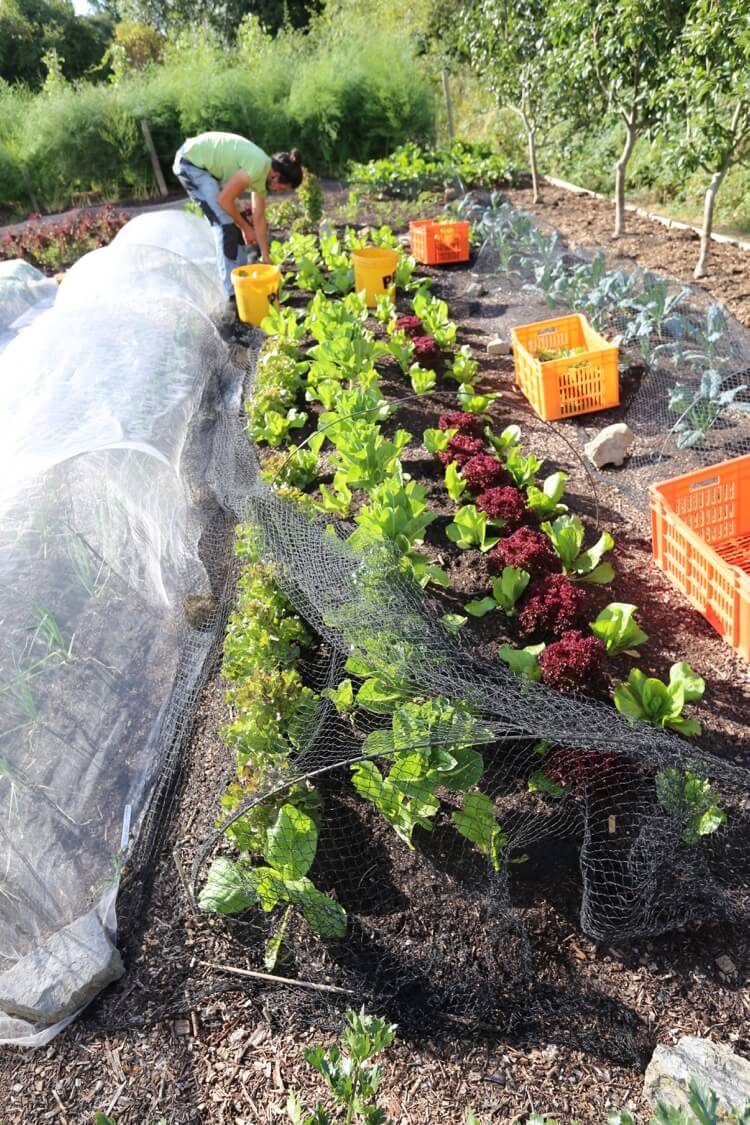
Final pick of lettuce, with chicories interplanted three weeks earlier

Lettuce plants twisted out and mulch applied: we are watering the chicories as well
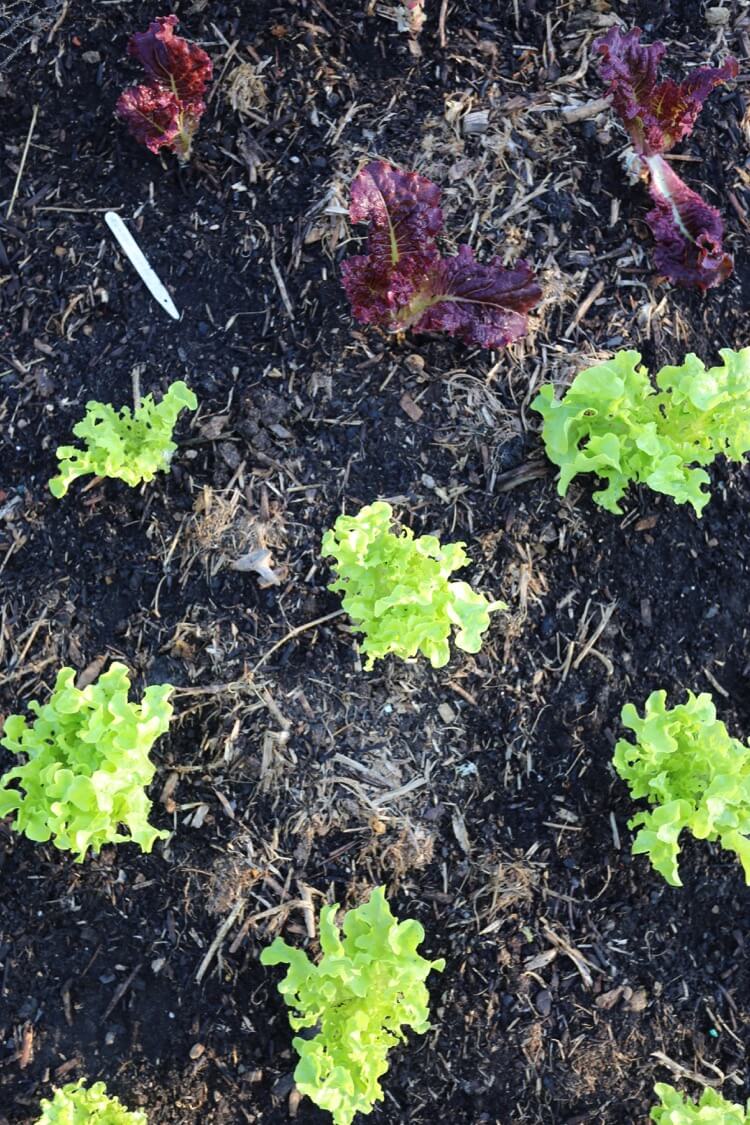
Mulch around lettuce of the previous crop, pea plants which were mowed off
New planting
We are using a lot of water for new plantings, but I figure it’s worth paying for, compared to leaving ground bare. I hope that by September these crops can bulk up with rain! Replanting no dig beds is quick, just dib holes and pop in the modules, no other preparation or new feeds.

Dibbing for chicory plants, after clearing summer calabrese and watering
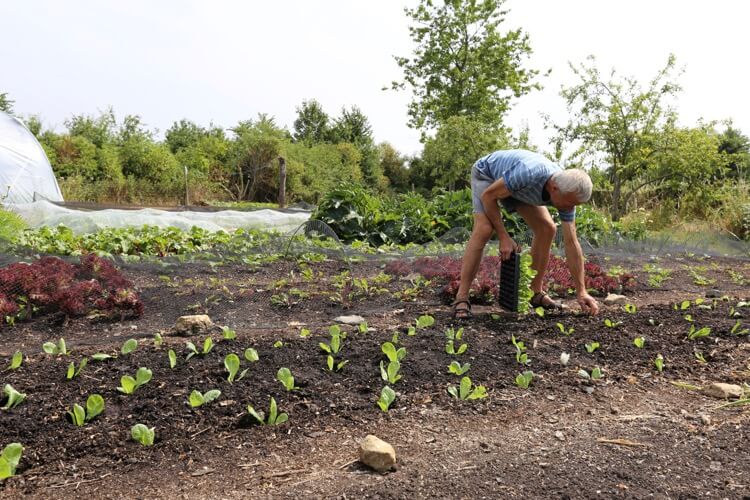
Planting chicories for autumn radicchio

Romanesco broccoli planted after spring onions, lots of holes by flea beetles
New planting 2
Most of my chicories for hearts are now in the ground. These beds were peas and onions until recently. The chicories are from Bingenheim seeds, two types - Palla Rossa and Treviso, for salad bags in late autumn to early winter.
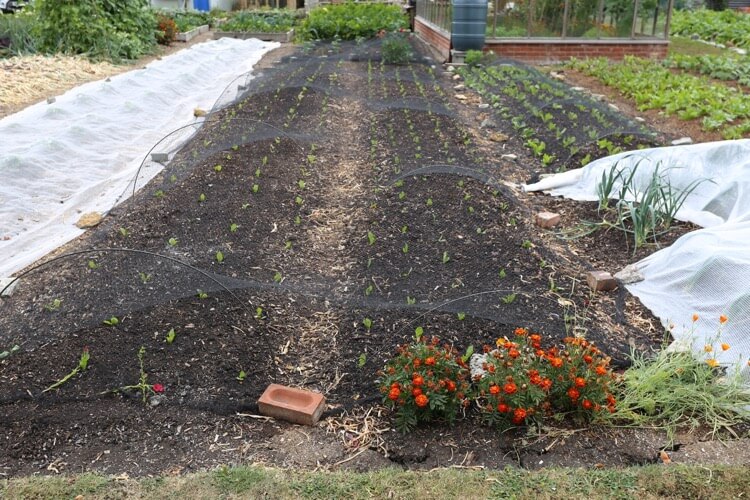
Onions pulled and about to be removed to dry elsewhere

Charles planting 18 day old chicories, sown 8th July

Leeks
We always run out of space in summer so I use interplanting to overlap crops, meaning you don’t need open spaces for new plants. These photos show leeks that went in just three days earlier, between lettuce that are being cropped every week for another 5-6 weeks.
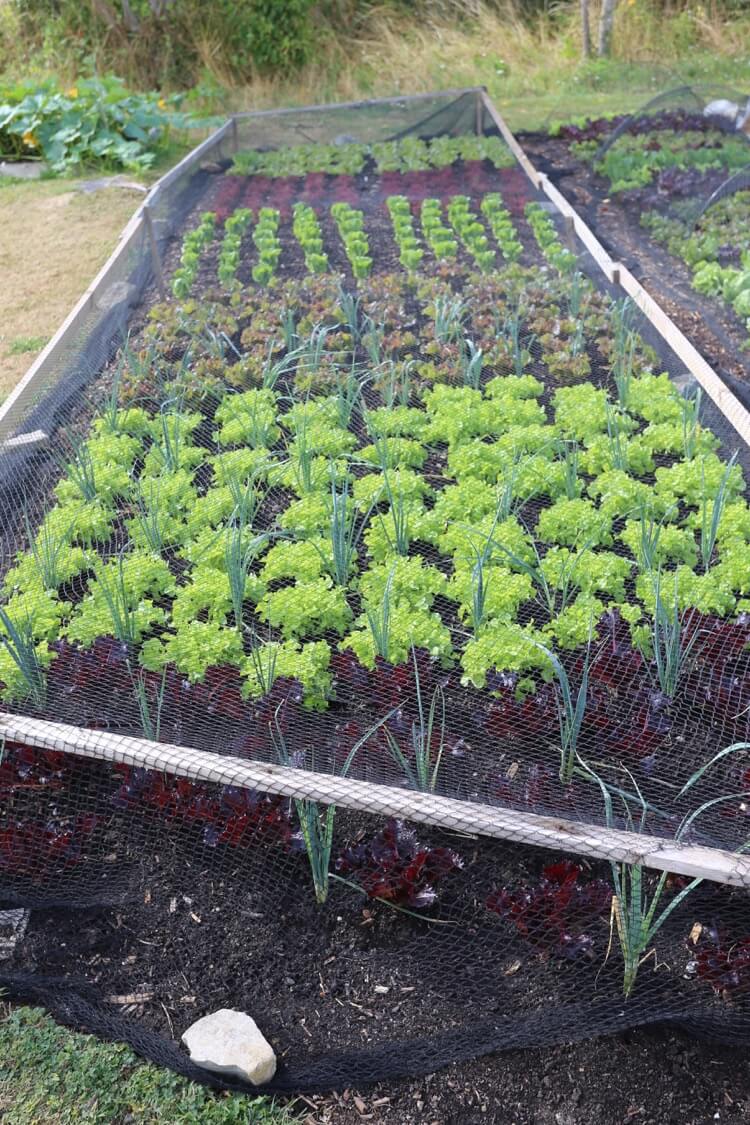
Diseases, pests
CATERPILLARS are in the ascendant, how they love the dry weather, or rather the butterflies and moths do. I have been amazed to see so much damage on sweet basil in the greenhouse, little butterflies and small green caterpillar-worms, even after spraying with Bacillus thuringiensis. However the polytunnel basil is healthy by comparison.
We even found caterpillars in some lettuce, mostly the red oak leaf types. So far my cucumbers and aubergines are free of red spider but I include a photo from a correspondent to show the damage they can do, and those plants are goners imo. Best remedy is healthy soil so plants do not succumb, perhaps until later in the summer.
Leek moth is a problem in warmer areas, see more about it on this forum post.

I was sent this photo of damage to aubergine by red spider mite
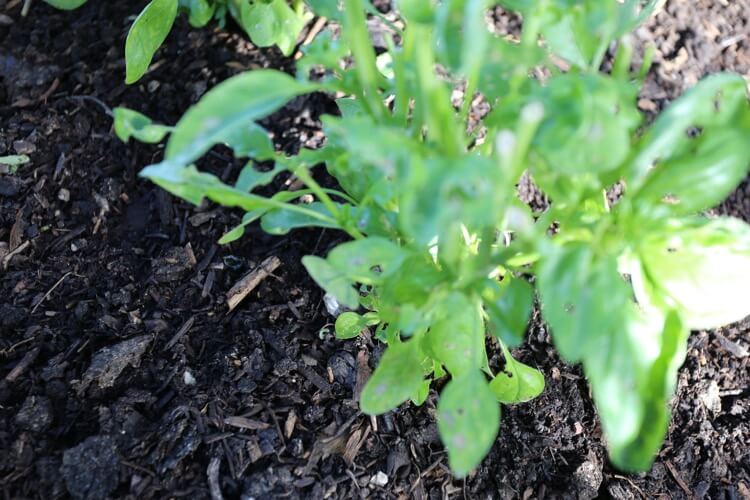
Look closely to see the small green caterpillar I knocked off, on the compost

We found caterpillares on Navarra lettuce mostly and after a thorough pick + removing them, they are now barely present

Cucumbers thank goodness are healthy in my polytunnel, Carmen F1 mostly
Onion harvests 1
It’s been great weather for it. Best pull onions when say half green, or most tops are fallen over. Bend them at the neck to make trimming and storage easier. Bunch into ropes towards the end of August when necks are mostly dry.
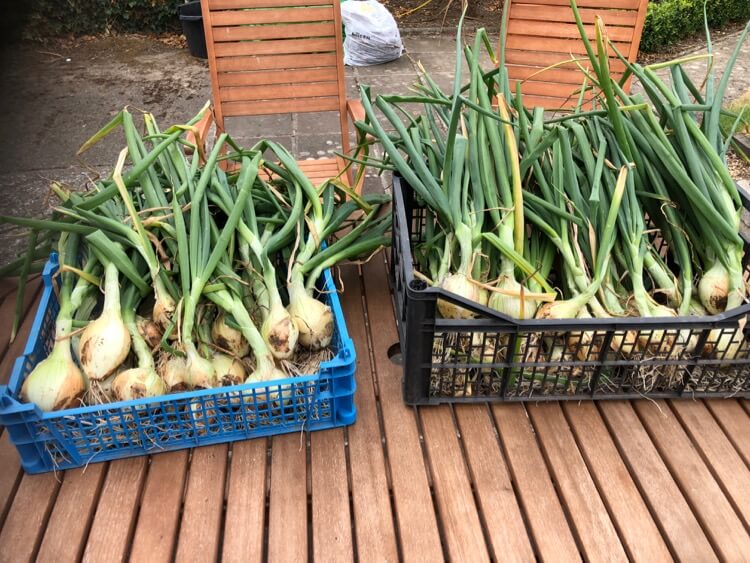
I was sent this image by Gerry from Ireland: this is the earliest stage at which I would harvest onions

Helpers from California, Andy and Courtney, pulled these onions when already half dry and laid them out beautifully
Onion harvests 2
We have some great Zebrune shallots, sown mid February. But germination was poor so they are bigger and less numerous than I intended.
There are many reports on social media of great results from multisowing many veg.
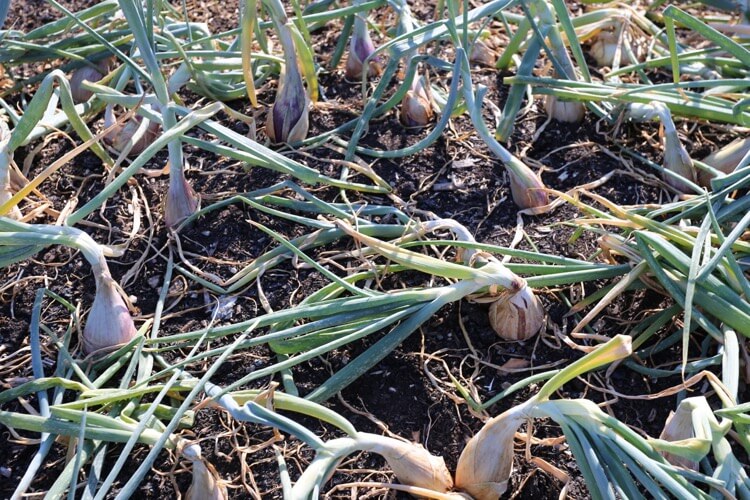
Shallots Zebrune sown 20th February, planted 2nd April
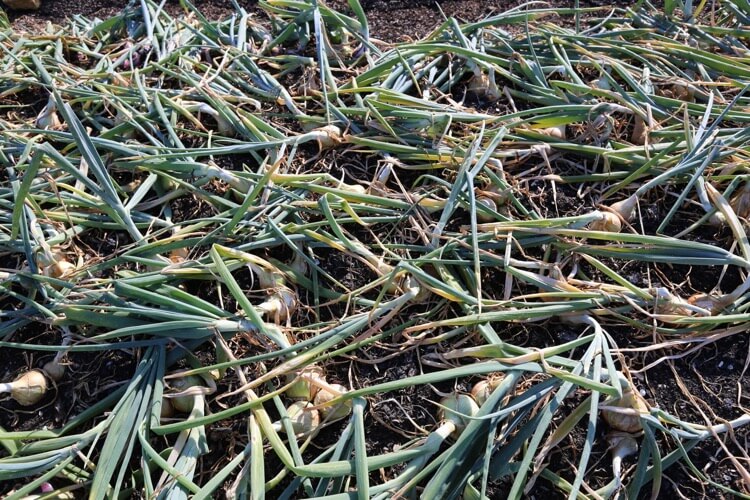
Multisown Sturon late July
Garlic
Do harvest it if you have not already. Tops are better half green at harvest. If mostly died off, the skin around each bulb’s cloves will be decayed and they look shabby.
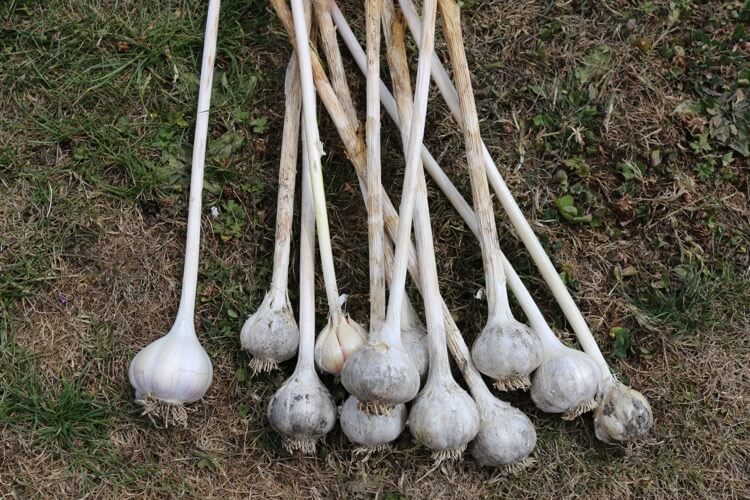
Hardneck garlic: bulb on left was pulled a week earlier than the others
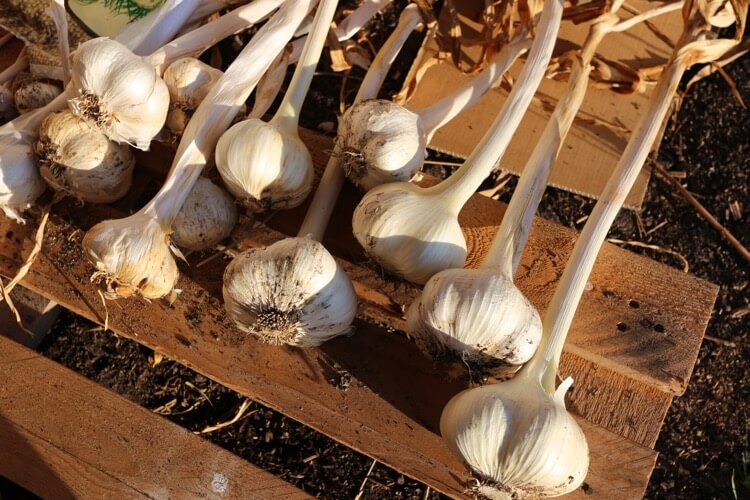
Elephant garlic sown October, harvested mid July, tastes like leeks
Protected crops
I am interested to see healthier leaves on tomatoes in the greenhouse compared to the polytunnel, where leaf roll is common. Aubergines have been amazing - but even outdoors they are cropping, unheard of hereabouts.

I loop cucumber stems over the wire and then they crop while descending
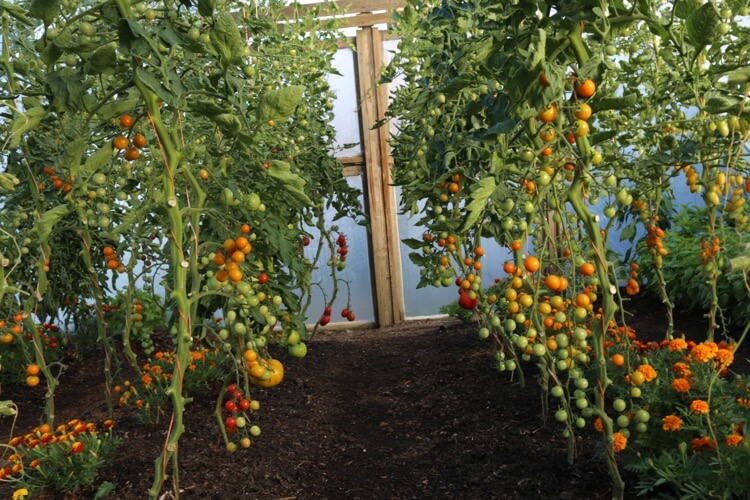
Mostly Sungold tomatoes, planted 12h May

Black Beauty F1 on grafted plants from Delfland Nurseries
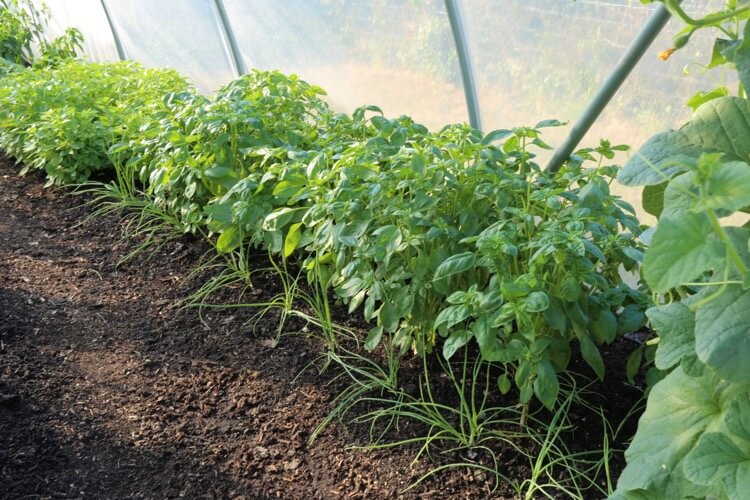
Spring onions planted beside the tunnel basil
New ground far corner
We made a new bed over ground where wood shavings had initially mulched the vigorous weeds. Those shavings are now mulching paths elsewhere while we put compost on the cleaner ground and planted squash.
Also a hedge behind of Sea Buckthorn and Amelanchier Lamarckii (Juneberry).

Spot the difference: 19th June
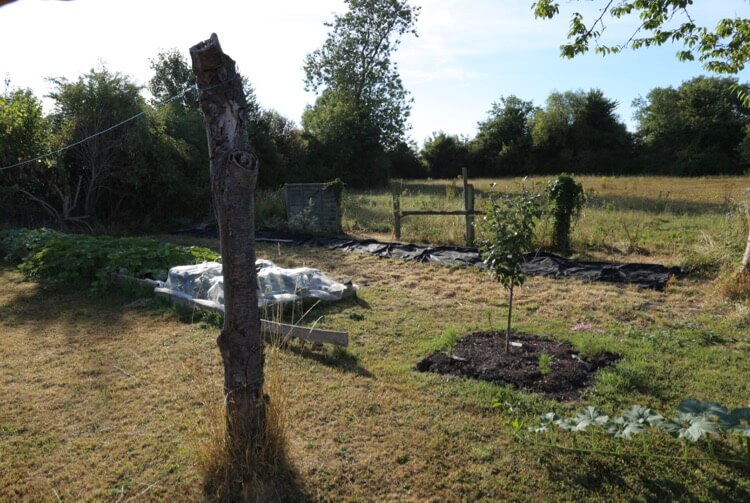
same view 25th July
More on bindweed
My video on bindweed has provoked encouraging responses, such as this one:
Girly HR Gardener:
I had bindweed in my original allotment plot and by following no-dig I have got rid of it, so now in my 3rd year there is no bindweed on my plot.
I've just taken over the plot next door and that has been left to grow for a number of years. I therefore decided to take a more aggressive approach in the first year and so I strimmed it all to the ground and covered the whole area (160 square metres) with weed membrane*. My intention is to then put beds onto it, cut through the membrane and add cardboard/compost to grow into next year. I am confident that even with 5+ years of unchecked weeds that with this approach I'll get rid of the worst of it within a couple of years again.
- my take on membrane is to avoid it where possible because of polythene threads after cutting: I advise black polythene 600 guage








































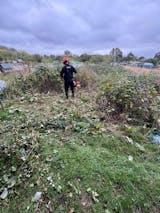
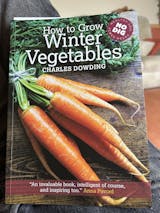


0 comments